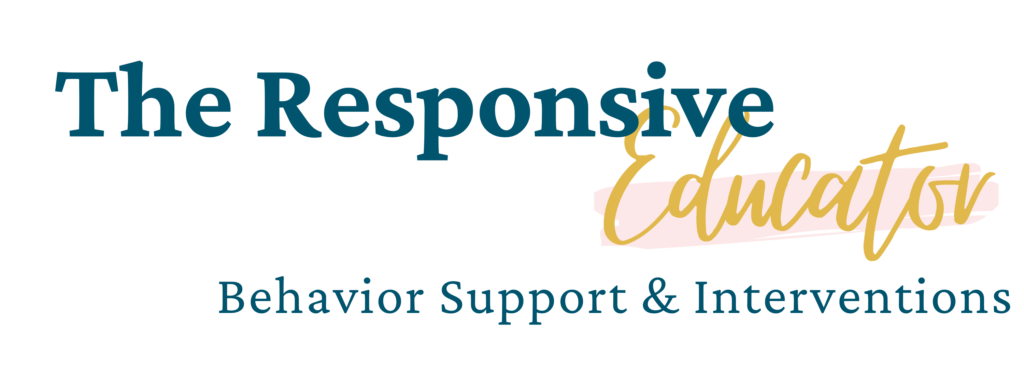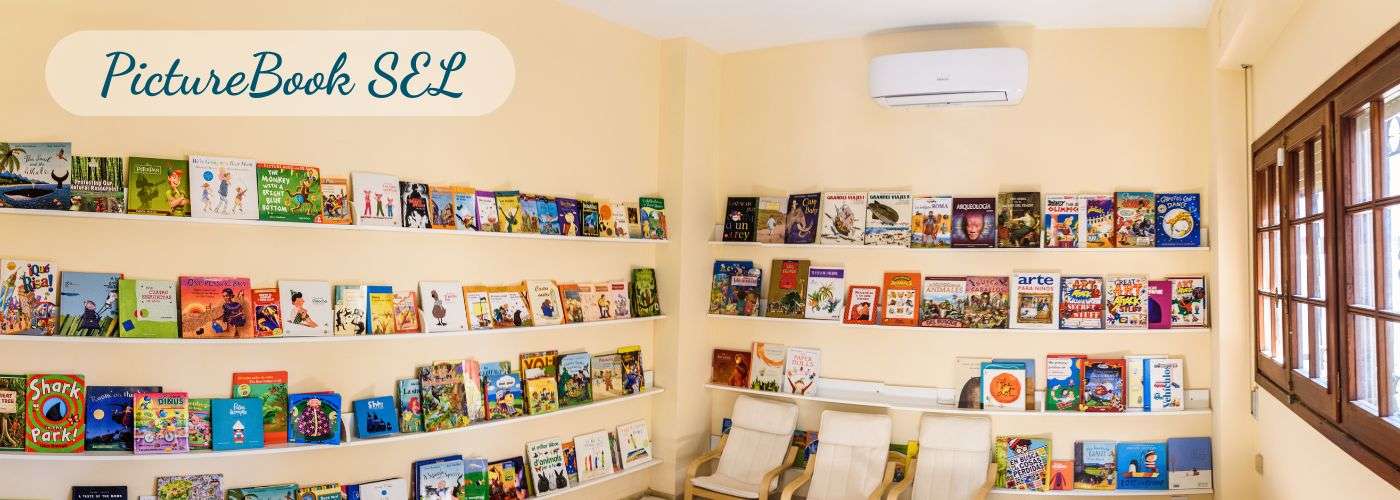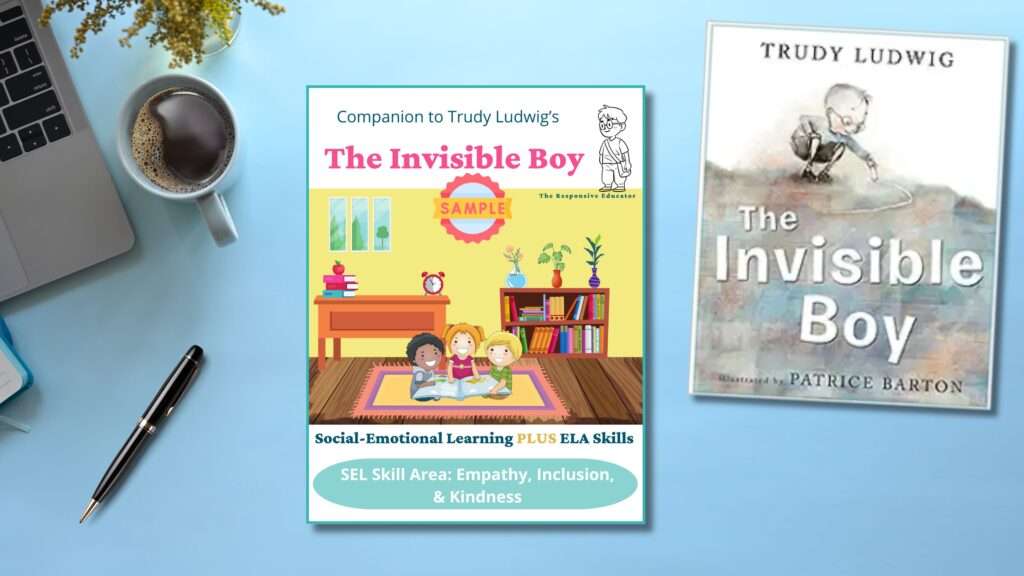


Sensory processing differences can shape how children experience the world—and how they respond to everyday environments. For some kids, a scratchy tag or a noisy classroom can feel overwhelming. Others may seek out extra movement, deep pressure, or sensory input to stay regulated. Whether a child is on the autism spectrum, has sensory processing disorder, or simply has strong sensory preferences, it can be difficult for adults and peers to fully understand what’s going on beneath the surface.
That’s why books are such a powerful tool.
The stories below offer windows into the sensory experiences of children who see, hear, and feel the world a little differently. These books not only help kids feel seen and understood, but also provide classmates, teachers, and caregivers with the empathy and insight needed to support them. From playful celebrations to gentle guides for coping, these stories validate big feelings and empower kids with strategies to help them thrive.
For some of the books on this website, I have created interactive read-alouds to enrich their use in the classroom. These interactive read-alouds include discussion questions, activities, and prompts that engage students and deepen their understanding of the book’s themes. More interactive read-alouds are on the way. If there are specific books for which you would like to see a read-aloud created, please contact me using the form at the bottom of the page.
To learn more about supporting social-emotional learning and using interactive read-alouds in the classroom, check out these posts:
(As an Amazon affiliate, I earn a small commission if you purchase products through the links on my posts. Thank you for your support!)
Summary:
Arnie is a bright and energetic student who wants to do well in school—but his sensory needs often get in the way. Written from Arnie’s point of view, this story shares how he learns to use simple tools and strategies to stay focused, calm, and successful in the classroom. From chewy pencil toppers to a special seat cushion, Arnie discovers that the right supports can make a big difference in helping him thrive.
Description:
This book is a standout resource for introducing the concept of sensory processing challenges in an inclusive and affirming way. Arnie’s upbeat voice makes his experiences relatable and easy to understand, especially for students on the autism spectrum or those with sensory modulation disorder. The story gently normalizes the use of sensory tools while emphasizing the importance of recognizing and supporting diverse learning needs. The book also includes helpful resources for adults, such as definitions, discussion questions, and a list of related materials—making it ideal for classroom read-alouds, OT sessions, or home libraries.
Reviews and Considerations:
Educators, therapists, and families consistently praise Arnie and His School Tools for its ability to foster empathy and understanding. Teachers often use it to proactively explain why some students may need different supports, helping to reduce stigma and increase peer acceptance. Many parents report that their children with sensory needs instantly connect with Arnie and feel empowered by seeing their experiences reflected in a positive way.
That said, a number of reviewers have noted frustration with one line near the end of the book where Arnie says, “I probably won’t grow up to be an accountant like my dad.” While the intent seems to be about his need for movement, some readers felt it unintentionally limits Arnie’s future potential. Many choose to simply reword or skip that line during read-alouds, emphasizing instead that sensory needs don’t define what a child can become.

Summary: Ellie Bean is full of big feelings and unexpected reactions—from intense meltdowns to over-the-top responses that leave others scratching their heads. What looks like “drama” is really Ellie’s struggle with sensory processing. Written by a mom and special education teacher, this story walks readers through Ellie’s challenges, her discovery of occupational therapy, and the sensory tools that help her manage day-to-day life. By the end, Ellie begins to understand her own needs—and though she’s learning to cope, she proudly keeps her crown.
Description: This book serves as a helpful introduction to sensory processing disorder (SPD), especially for families just starting their journey. It gives a clear picture of how confusing and overwhelming the world can feel for a sensory-sensitive child. Through accessible language and engaging illustrations, readers see Ellie’s transformation as she learns strategies to self-regulate and communicate her needs. While some phrases may be a bit advanced for very young readers, the book provides a starting point for important conversations between children, parents, and educators. Additional information and resources at the end add value for adults looking to better understand and support SPD.
Reviews and Considerations: Ellie Bean the Drama Queen resonates deeply with many parents and educators of children with sensory needs. Readers often report that their children see themselves in Ellie and feel comforted to know they’re not alone. Teachers have successfully used this book to promote empathy and inclusion in the classroom. The illustrations and relatable examples—like brushing issues and loud noises—help demystify common SPD behaviors.
However, some readers have raised concerns about the book’s tone. While the title is playful, a few reviewers felt that Ellie’s behaviors are framed more as a burden on others rather than valid experiences of sensory overload. One notable critique is that the occupational therapist, rather than Ellie herself, is positioned as the story’s “hero,” which may leave some children feeling that their value is tied to becoming easier to manage. These reactions highlight the importance of using the book as a discussion tool, reinforcing messages of self-worth, understanding, and shared problem-solving rather than “fixing” the child.

Summary: Sebastian is a bright, energetic boy who just can’t seem to sit still—and he’s not alone. In Sensory Seeking Sebastian, readers are introduced to the daily challenges and triumphs of a child who experiences the world differently due to Proprioceptive Sensory Disorder and ADHD. Through Sebastian’s story, young sensory seekers learn practical strategies—like chewing, bouncing, or jumping—to help regulate their bodies and emotions. Told from a supportive, empowering perspective, this story encourages self-awareness and equips children with tools to manage sensory input on their own terms.
Description: This book is especially valuable for families navigating ADHD, Autism, or Sensory Processing Disorder (SPD). Written by a mother who has lived this journey with her son, it offers both authenticity and clarity. Sebastian models how children can take ownership of their regulation needs with tools learned through occupational therapy. The story normalizes sensory needs and presents coping strategies in a way that’s relatable and accessible to children. Representation also matters here—Sebastian is a Black main character, adding much-needed diversity to the genre of neurodiversity books. It’s ideal for reading with sensory seekers, siblings, peers, or in classrooms to promote understanding and inclusion.
Reviews and Considerations: Sensory Seeking Sebastian has been praised by parents, educators, therapists, and foster care professionals for its real-world application and uplifting tone. Many families shared emotional responses as their children finally saw themselves reflected in a story, recognizing their own behaviors and learning new tools. The book’s clear depiction of sensory strategies—like using chewable necklaces, jumping on a trampoline, or eating crunchy foods—makes it practical as well as heartwarming.
However, a few readers felt the book’s execution could be improved. One noted that certain color and illustration choices made the book feel difficult to read and unintentionally off-putting. Despite this, the majority of reviews emphasized its value as both an SEL resource and a confidence booster for sensory-seeking kids. Parents frequently described their children feeling proud, empowered, and understood after reading Sebastian’s story.

Summary: Some days feel like everything is just too much. Too bright, too loud, too itchy, too tight. In this beautifully written rhyming picture book, a young girl navigates the overwhelming sensations of her day—until she finds comfort and calm in her safe space. Based on the author’s personal experience with sensory processing disorder, Too Much! An Overwhelming Day is a compassionate look at sensory overload from a child’s point of view, offering a soothing path to self-regulation.
Description: Jolene Gutiérrez gently normalizes the sensory struggles experienced by many neurodivergent children, helping readers understand that these moments are not misbehavior—they’re signals of a nervous system in overdrive. Angel Chang’s vibrant illustrations match the emotional rhythm of the story, making the child’s experience both visible and validating. The book concludes with an informative caregiver and educator guide, offering explanations of sensory systems, strategies for support, and how to help children find relief when the world feels overwhelming. This is an ideal read-aloud for both home and classroom, especially for students with SPD, autism, or anxiety.
Reviews and Considerations: Readers praise this book for its heartfelt authenticity and empowering message. Parents, educators, and therapists consistently describe children feeling “seen” as they connect deeply with the story—especially those who experience sensory sensitivities themselves. Many teachers use it to build empathy and understanding in the classroom. The rhyme keeps kids engaged, and the sensory creatures illustrated throughout add a layer of playful representation to the child’s feelings.
However, a few reviewers noted that the illustrations—though beautifully expressive—may feel too busy for some children with strong visual sensitivities. Still, the vast majority found the book soothing, relatable, and deeply helpful in opening conversations about overstimulation and emotional regulation.

Summary: In this joyful and affirming picture book, a young girl celebrates the unique way her brain experiences the world. Whether she’s buzzing like a bee, roaring like a lion, or dancing like a butterfly, she embraces her sensory-seeking energy as something magical. Told through vivid animal metaphors and lyrical language, My Brain Is Magic invites all children—especially neurodivergent ones—to celebrate the power and beauty of their brains.
Description: This empowering story shifts the narrative around sensory differences from something to manage or fix into something to appreciate and celebrate. With vibrant illustrations by Geeta Ladi and a sensory-positive lens, the book captures the energy and intensity of sensory-seeking experiences in a way that feels validating and uplifting. A caregiver note at the end offers helpful language for adults to better understand sensory-seeking behaviors and support regulation strategies with compassion. It’s a refreshing addition to the world of neurodiversity-friendly literature, perfect for home, school, or therapy settings.
Reviews and Considerations: Families, educators, and therapists alike have praised My Brain Is Magic for its inclusive representation and positive messaging. Many readers highlighted how meaningful it was for children to see their high-energy sensory behaviors reflected as strengths. Reviewers also appreciated the representation of a girl of color as the main character, noting how rare and impactful that still is in books about neurodiversity.
One standout aspect of this book is its tone—readers noted that it celebrates sensory seeking as a gift rather than labeling it as a challenge to be overcome. Some called it “joyfully revolutionary” for how it honors a child’s experience without focusing on fixing or managing behavior. While the digital version has received some minor criticism for formatting issues, the print edition continues to be a favorite among families with neurodivergent children.

Summary: Holly is a bright and curious student who loves science—until she hears that the next experiment involves slime. For Holly, who has autism and sensory processing challenges, the thought of touching something sticky is overwhelming. With the gentle support of her family, her teacher, and her classmates, Holly learns to advocate for her needs and discovers that with the right strategies, she can participate in the experiment in her own way. This #OwnVoices story is based on the author’s personal experience as an autistic adult and parent of autistic children.
Description: Too Sticky offers a realistic, compassionate look into the sensory challenges many autistic children face and how supportive environments can make a world of difference. Through Holly’s story, readers learn about tactile sensitivity, anxiety around participation, and how accommodations—like letting someone wear gloves or take things slowly—can empower kids to take part in activities without feeling pressured. The narrative is enhanced by colorful illustrations and ends with a slime recipe and an author’s note explaining autism and sensory processing in kid-friendly terms. This book is especially valuable for inclusive classrooms, therapy settings, and families wanting to foster empathy and understanding.
Reviews and Considerations: Readers consistently praise Too Sticky for its honest, relatable portrayal of sensory sensitivity and for centering a neurodivergent character in a positive, empowering light. Educators have found it helpful in teaching students about neurodiversity and self-advocacy, while parents appreciate the realistic strategies shown in the story.
Many note that the book’s strength lies in its gentle tone and affirming message: Holly isn’t “fixed”—she’s supported. However, one critical perspective raised concerns about whether the storyline could be interpreted as pressuring a child to conform by participating in a sensory activity they initially feared. This highlights the importance of framing the book as a tool for opening conversations, not prescribing a specific path for every child.
Despite differing views, Too Sticky remains a widely valued resource for fostering understanding and inclusion, especially because it comes from an author with lived experience.

Summary: Bella is having a very bad day. From the moment she wakes up with tangled hair and rejects her breakfast, to tantrums at the store and tears at bedtime, nothing seems to go right. But after a long, loud day of saying “No!” to everything and everyone, Bella finds comfort in her mom’s quiet understanding—and the realization that tomorrow is a brand new day.
Description: This relatable, humorous picture book captures the emotional rollercoaster of a preschooler’s meltdown with warmth and wit. Perfect for toddlers and young children, My No, No, No Day helps normalize those tough emotional days kids sometimes have. It opens the door to conversations about frustration, regulation, and making mistakes—all in a way that young readers can understand. Caregivers and teachers will appreciate the opportunity to discuss big feelings without shame and model ways to recover after an off day. The expressive illustrations and playful narration make it especially engaging for read-alouds.
Reviews and Considerations: Readers love how honestly this book portrays a “bad day” through a child’s eyes—without judgment or unrealistic expectations. Many parents of children with sensory processing issues or autism say their kids deeply relate to Bella’s feelings. The humor and authenticity resonate with both children and adults, making it a beloved bedtime or classroom read. Educators note it’s a valuable tool for teaching emotional regulation and social-emotional literacy in early childhood settings.



Sign up now to receive a free sample of “The Invisible Boy” Interactive Read-Aloud Lesson Plan! This comprehensive resource includes engaging activities designed to help your students develop empathy and inclusion.
By signing up, you will also join our newsletter, where you’ll receive:
Join our community of educators dedicated to fostering social-emotional growth in the classroom!

( ) = Coming Soon
(Body Safety & Personal Boundaries)
(Bravery & Trying New Things)
(Conflict Resolution)
(Compromise / Cooperating)
(Coping with Change)
(Creativity & Imagination)
(Dreams & Aspirations)
(Dyslexia)
Feelings & Emotional Awareness
(Kindness & Generosity)
(Managing Physical Actions)
(Mindfulness)
(Organization & Planning)
(Peer Influence)
(Perseverance)
(Physical/Medical Disabilities)
(Positive Attitude)
(Sensory Processing)
(Separation Anxiety)
(Sharing)
(Speaking Politely)
(Teasing & Bullying)
(Technology)
(Trauma Recovery)
(Winning & Losing)